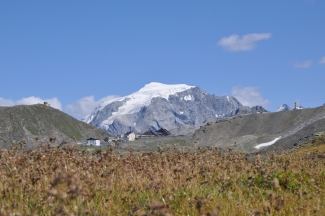On military-historical paths to the little «Machu Picchu».
Henri Duvoisin
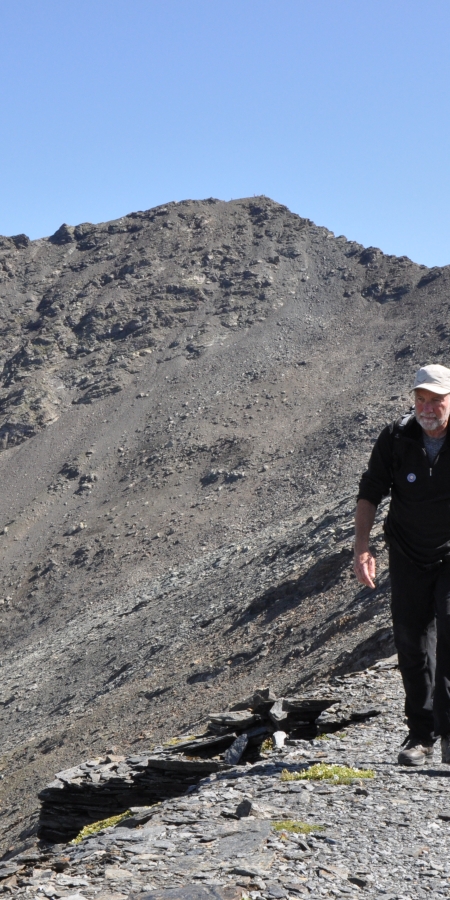
Battle for Monte Scorluzzo
It is a feat by the Austrian troops. With only 29 men, they conquer the 3,094-metre-high Monte Scorluzzo and drive the Italians back into the Valle del Braulio. We are in the First World War and it is 4 June 1915. Italy has recently declared war on Austria-Hungary and occupied Mount Scorluzzo. The war front runs right through the Southern Alps and there is a mad war of positions in the middle of the high mountains.
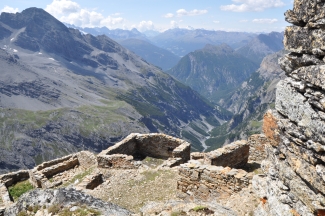
With the PostBus to the Stelvio Pass
Today, more than 100 years later, you can relive the struggle for the Scorluzzo on a mountain hike. We meet Henri Duvoisin at a quarter past seven at the post office in Sta. Maria. The PostBus takes us via Umbrail in 45 minutes to the Stilfserjoch, 2,757 metres above sea level, where we are greeted by a cool breeze. People with skis on their shoulders run across the car park to take the cable car to the summer ski area on the Stelvio glacier. But our destination is the opposite Monte Scorluzzo.
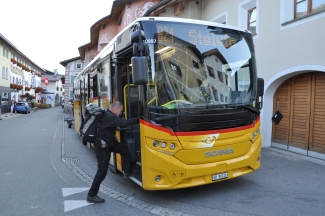
«How could the soldiers stand it?»
We let the rugged landscape and the nearby glaciers take their effect on us and follow the conspicuous trail markings in red-green-white. As part of an Interreg project, four military-historical hiking trails were secured, marked and equipped with more than 40 display boards explaining the war situation in the Umbrail and Stelvio area at that time. «The goal is to preserve, document and make accessible the traces of the First World War that can be found here,» says Henri. He has been leading tours to the various war sites for twelve years and has acquired a broad historical knowledge. «I am especially interested in the lives of the soldiers. I ask myself: How did they stand it? How could they obey so unquestioningly and fight for their fatherland despite the most adverse circumstances?»
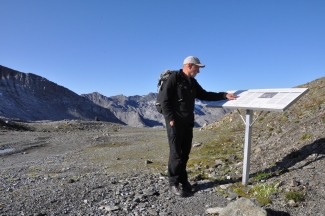
The plan of a major offensive
When we reach the top, Henri shows us a cave and kitchenette. «Here they slept, cooked and kept watch, but the men were not really soldiers - they were all employed on the Eastern Front - but simple people with miserable equipment, some of them had only shoes made of straw.» With our Goretex jackets and Vibram soles, we can't imagine how such a thing could have been possible. «There are only a few traces of the Austrians, as they did not build any large structures. They simply persevered in the open, day in, day out, even at minus 30 degrees,» Henri explains. The Italians were completely different. The troops consisted of excellently trained mountain fighters - the Alpini. And they made an enormous effort to recapture the Scorluzzo. On the south-west ridge, the Filone del Mot (2,899 m a.s.l.), they built an entire village that would provide space for a complete company. From there, the Alpini planned a major offensive to storm the mountain.
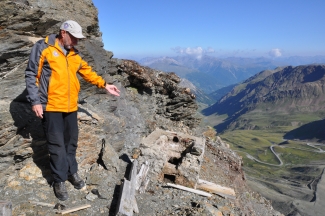
Easy target for the Austrians
The Alpini village is very well preserved and is now known as the «Italian Machu Picchu» because it looks amazingly similar to the Inca village in Peru. And it is our next destination. We descend via the steep south ridge, the path is exposed and requires a head for heights and surefootedness. Soon we reach the first fortification of the Italians, a solidly built structure. The Alpini did not get any further than here, they were too easy a target for the Austrians, who could simply shoot down.
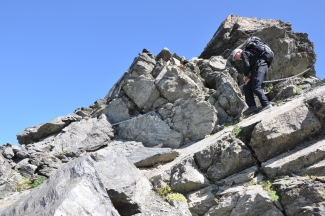
Surprised by the end of the war
Now the path is flat and we can enjoy the view. On the left, black and mighty rock faces, occasionally crowned with a glacier. On the right, a plateau in lush green, with glistening streams and small lakes in between. We walk through trenches and again and again we encounter remains of Italian war buildings. Finally we reach the Alpini village. Geometrically precise rows of houses occupy the narrow ridge - historic architecture in the middle of the mountains. «It seems that the Italians were surprised by the end of the war. Because they prepared everything in such a way that they could stay here for a longer period of time.»
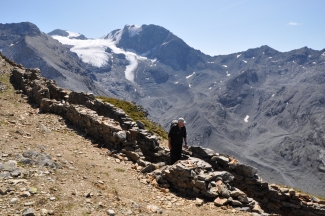
Battle in the eternal ice
During the picnic, Henri points to a glaciated peak, Monte Cristallo (3,434 m above sea level). This mountain was also fiercely contested. The Austrians and Italians dug kilometre-long tunnels through the glacier ice to advance towards the summit and surprise the enemy. To dig tunnels in the ice, they only used picks, drill bits and shovels, as explosives are completely unsuitable in ice. Unimaginable! But numerous historical photographs, which can be seen in Museum 14/18 in Sta. Maria, bear witness to this.
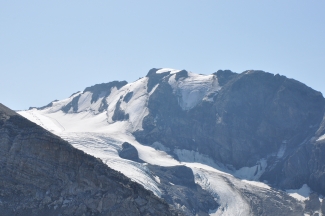
Lucky in misfortune
From the Alpini village, the hiking trail leads down to the «Piano di Scorluzzo» plateau. We enjoy the lush greenery and the cottongrass that fringes the streams like snowflakes. Now it is not far to the Umbrail pass road. Before we reach it, Henri shows us an Italian tunnel and material bunker. It is striking - as Henri remarks - that the gun hatches are aligned exactly in the direction of Switzerland. Fortunately, the Austrians held out on Monte Scorluzzo.
